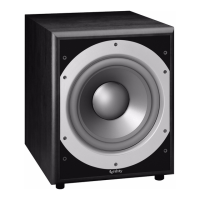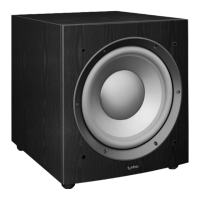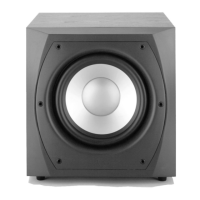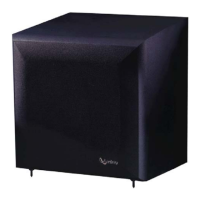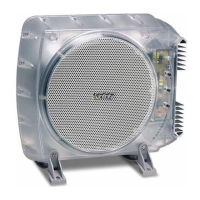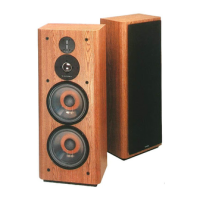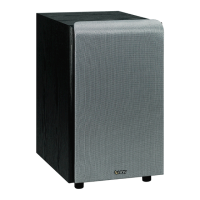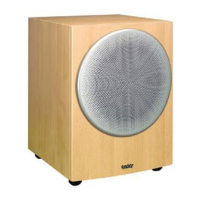3
The operation of a subwoofer (or any
moving-coil loudspeaker) is divided
into two regions. Below resonance,
where the motion of the cone is
“stiffness-controlled,” the subwoofer’s
suspension does a great deal of the
work of opposing the inertia of the
moving assembly – the stiffness of
the suspension controls the motion
of the cone. Above resonance, where
the motion of the cone is “mass-
controlled,” the subwoofer’s
suspension has little effect on the
motion of the cone, and the motor
must do all the work of opposing the
inertia of the moving assembly – the
motor controls the motion of the cone.
“Opposing inertia” simply means
starting and stopping the motion of
the cone.
The metal inserts included with your
Kappa Perfect VQ Series woofer are
used to adjust the amount of force the
motor can exert on the inertia of the
moving assembly. The largest of the
two inserts (LowQ), when installed in
the woofer’s polepiece, will provide
the highest motor force and, conse-
quently, the lowest Q (see Figure 3).
The smaller of the two inserts (MidQ)
will provide less motor force and
somewhat higher Q and the woofer
used without an insert will have a
much higher Q. (continued)
VARIABLE Q
Figure 3.
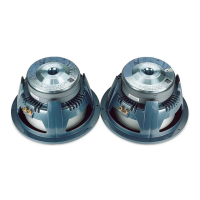
